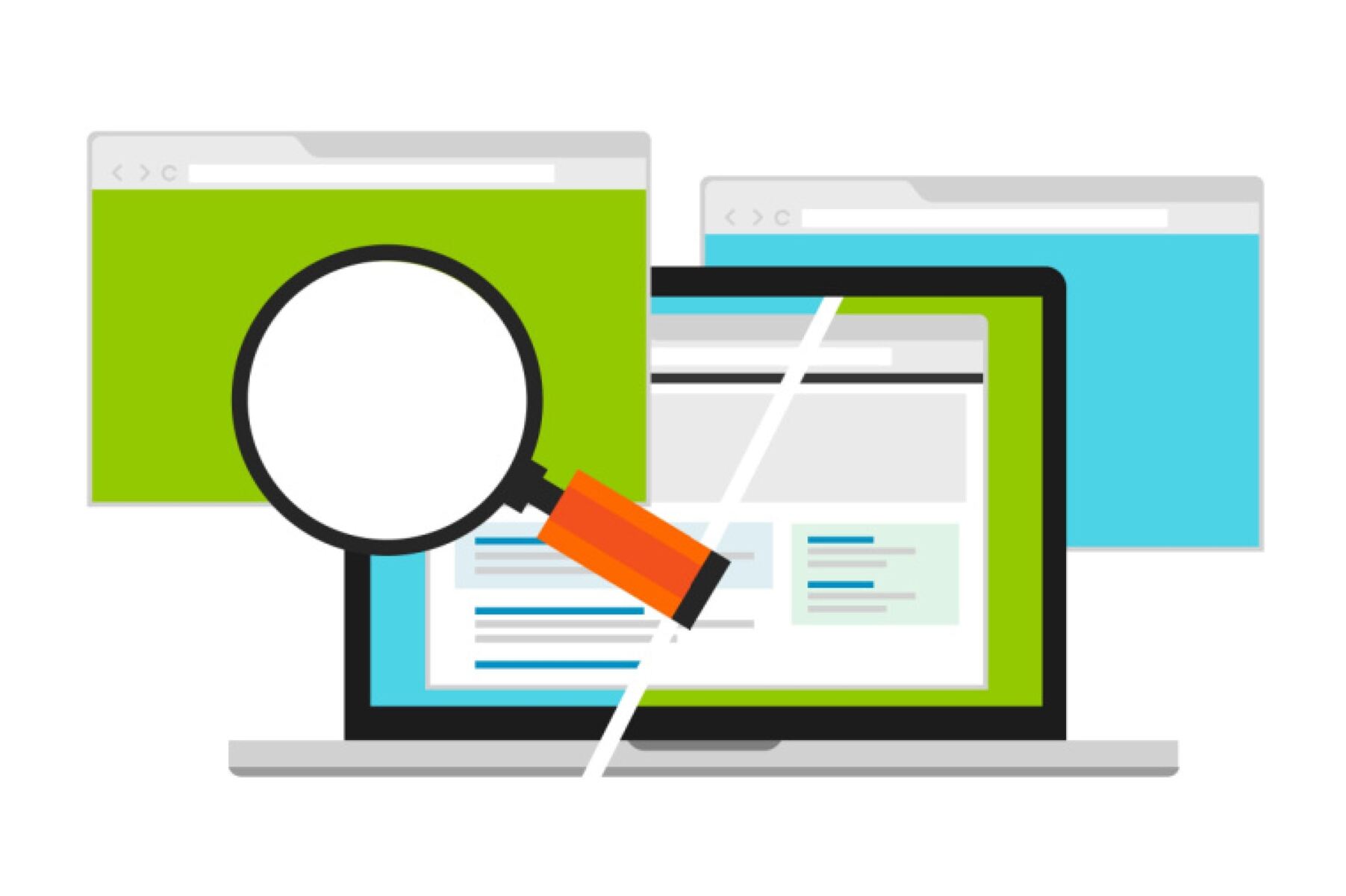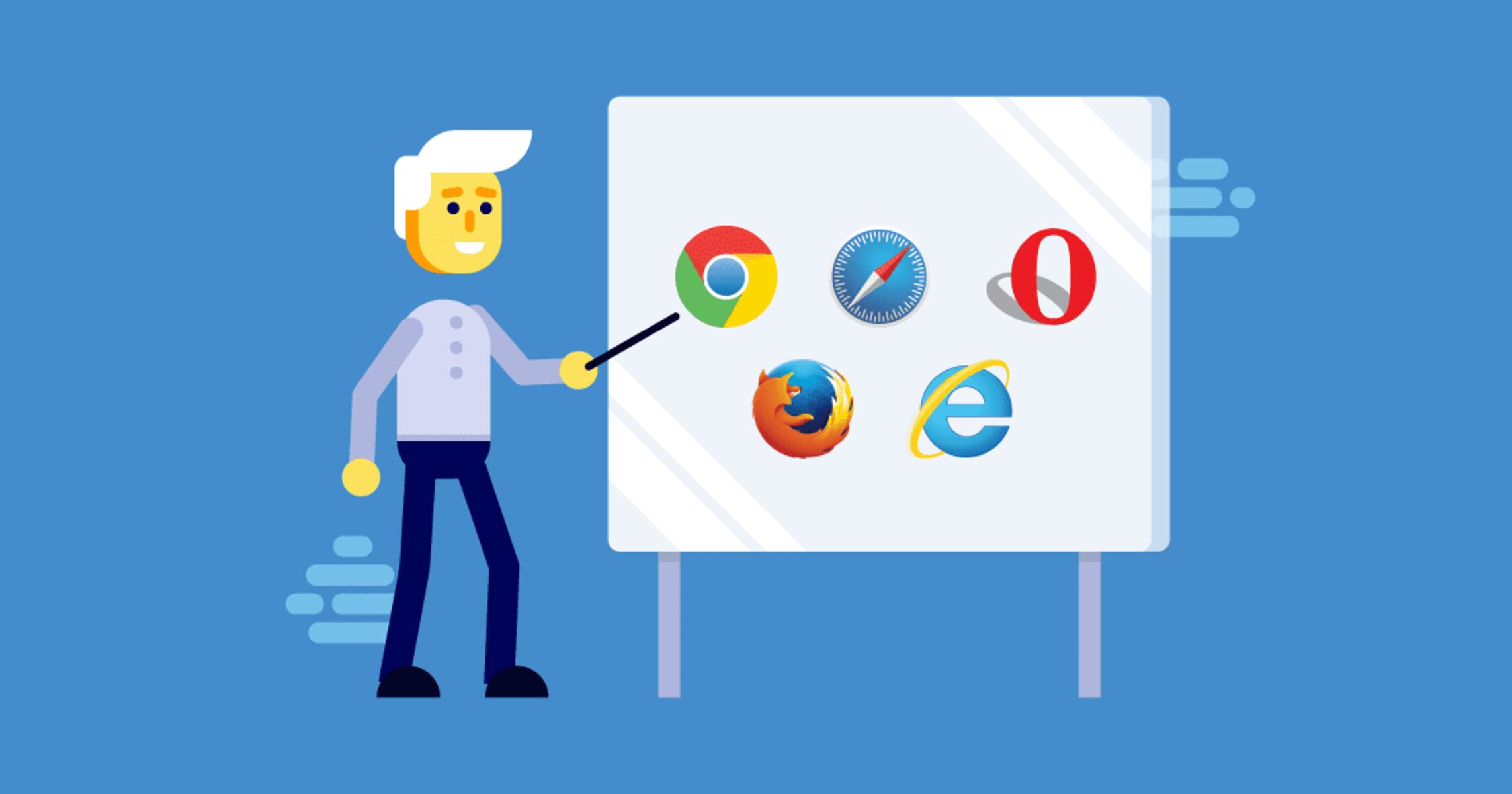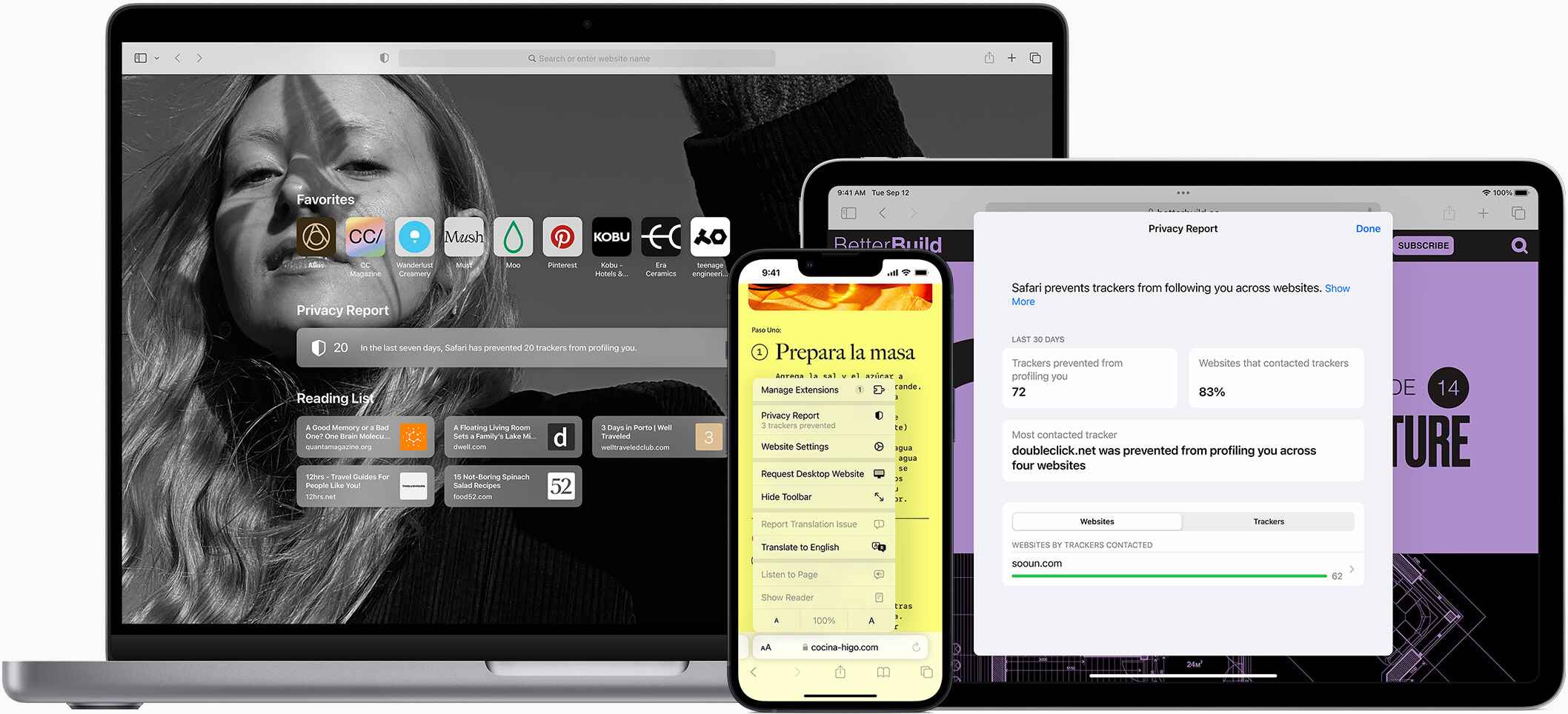Introduction
As the internet has evolved, so have the ways in which we access it. With a wide range of browsers available to users, including Chrome, Firefox, Safari, and Internet Explorer, it has become crucial for websites and web applications to be compatible with multiple browsers. This is where cross-browser testing comes into play.
Cross-browser testing refers to the process of ensuring that a website or web application works consistently and effectively across different web browsers. It involves testing the functionality, layout, and overall user experience of a site on various browsers and versions to detect any compatibility issues.
With the increasing use of mobile devices and the emergence of new browsers, cross-browser testing has become more important than ever. It helps developers identify and address any issues that may arise when users access their site on different browsers and devices.
While every browser follows web standards, each has its own rendering engine, JavaScript interpreter, and CSS support. These differences can lead to inconsistencies in the way a website is displayed and functions across browsers. By conducting cross-browser testing, developers can ensure that their site is user-friendly and accessible to a wide range of users.
In this article, we will explore the importance of cross-browser testing, the challenges it presents, the benefits it offers, different approaches to conducting cross-browser testing, popular tools in the market, and best practices to follow. By the end of this article, you will have a comprehensive understanding of cross-browser testing and its significance in creating a seamless web experience for users.
What is Cross-Browser Testing?
Cross-browser testing refers to the process of verifying the compatibility and functionality of a website or web application across different web browsers. It involves testing the site’s layout, design, and functionality on various browsers and ensuring that it works consistently and effectively on each one.
Every web browser has its own rendering engine, which is responsible for interpreting and displaying the HTML, CSS, and JavaScript code of a website. These rendering engines, such as Blink in Chrome, Gecko in Firefox, and WebKit in Safari, can interpret the same code differently, leading to variations in how a website appears and functions across different browsers.
Cross-browser testing helps to identify any compatibility issues or discrepancies that may arise when a website is viewed on different browsers. It allows developers to detect and fix issues related to layout, styling, JavaScript functionality, and overall user experience.
During the cross-browser testing process, developers examine the website on various browsers and browser versions, ensuring that the design elements are consistent, the functionality is intact, and there are no visual or functional glitches. They also validate whether the website adheres to web standards and that it provides a seamless experience for users, regardless of the browser they choose to use.
An effective cross-browser testing strategy involves testing on a diverse set of browsers, including popular options like Chrome, Firefox, Safari, and Edge, as well as older versions that are still in use. This allows developers to identify any specific issues that may arise on certain browsers and take the necessary steps to address them.
Overall, cross-browser testing is a critical step in the website development process. It ensures that a website is accessible and usable to a wide range of users, regardless of the browser or device they are using. By conducting thorough cross-browser testing, developers can deliver a consistent and high-quality user experience across different platforms.
Why is Cross-Browser Testing important?
Cross-browser testing is essential for several reasons. It plays a crucial role in ensuring a seamless user experience and helps to achieve maximum reach and accessibility for a website or web application. Let’s explore some key reasons why cross-browser testing is important:
1. Consistent User Experience: Users expect a consistent experience when they visit a website or use a web application, regardless of the browser they are using. Cross-browser testing helps to identify any discrepancies or issues that may arise when a site is viewed on different browsers. By addressing these issues, developers can ensure that all users have the same high-quality experience, improving user satisfaction and reducing bounce rates.
2. Increased Accessibility: Different users prefer different browsers, and some may be restricted to a specific browser due to their operating system or device limitations. Cross-browser testing ensures that users can access and interact with a website regardless of their preferred browser, effectively increasing its accessibility to a wider audience.
3. Bug Detection and Issue Resolution: Cross-browser testing helps to uncover any bugs, glitches, or compatibility issues that may arise due to browser-specific rendering or functionality. By identifying these issues early on, developers can address them promptly, improving the overall performance and stability of the website or application.
4. Compatibility with Different Devices: With the increasing use of mobile devices, it is important to ensure that a website is responsive and functions properly across various screen sizes and resolutions. Cross-browser testing helps to verify the compatibility of a website or application with different devices, including smartphones, tablets, and desktop computers.
5. Adherence to Web Standards: Different browsers implement web standards in slightly different ways. Cross-browser testing ensures that a website adheres to these standards and functions as intended across multiple browsers. This not only improves compatibility but also future-proofs the website, making it less likely to break when new browser versions are released.
6. Brand Reputation: A website that works well across different browsers and provides a consistent and user-friendly experience reflects positively on the brand. Users are more likely to trust and engage with a website that is well-designed and functions flawlessly, leading to improved brand reputation and credibility.
Overall, cross-browser testing is crucial for delivering a seamless user experience, increasing accessibility, detecting and resolving issues, ensuring compatibility with different devices, adhering to web standards, and building a strong brand reputation. It is an indispensable step in the website development process that should not be overlooked.
Challenges of Cross-Browser Testing
While cross-browser testing is crucial, it can also be a complex and challenging process. Here are some of the main challenges that developers face when undertaking cross-browser testing:
1. Browser Diversity: There are numerous web browsers available in the market, each with its own user base and rendering engine. Chrome, Firefox, Safari, Edge, and Internet Explorer are just a few examples. Each browser may have different versions and updates, making it challenging to test a website across all combinations. Ensuring compatibility across multiple browsers requires comprehensive testing and meticulous attention to detail.
2. Browser-Specific Quirks: Different browsers interpret and render HTML, CSS, and JavaScript code in their own unique ways. They may have browser-specific quirks and behaviors, leading to inconsistencies in the way a website is displayed or functions. Identifying and addressing these quirks can be time-consuming and require extensive knowledge of browser compatibility issues.
3. Fragmented Device Ecosystem: With the rise of mobile devices, cross-browser testing has become even more challenging. Websites need to be tested on a variety of devices with different screen sizes, resolutions, and operating systems. This fragmented ecosystem adds complexity to the testing process and increases the number of variables that need to be considered.
4. Time and Resource Constraints: Testing a website across multiple browsers and devices is time-consuming and can require substantial resources. Setting up testing environments, acquiring different devices, and performing thorough testing on each one can be a significant investment. Limited time and resources can make it difficult to conduct comprehensive cross-browser testing.
5. Testing Environment Replication: Replicating the exact testing environment for each browser can be challenging. Factors such as screen resolution, browser plugins, and network settings can all influence the behavior of a website. Ensuring consistent testing environments across different browsers and devices can be a complex task.
6. Maintenance and Updates: Browsers are regularly updated with new versions and features. This means that cross-browser testing needs to be an ongoing process to ensure compatibility with the latest browser versions. Ongoing maintenance and updates are required to keep a website functioning optimally across different browsers.
Despite these challenges, cross-browser testing is crucial for delivering a high-quality user experience and ensuring maximum compatibility and accessibility. By overcoming these challenges and implementing effective testing strategies, developers can mitigate potential issues and create websites that work seamlessly across various browsers and devices.
Benefits of Cross-Browser Testing
Cross-browser testing offers several benefits to web developers and businesses. By ensuring compatibility and consistency across different browsers, it helps to create a seamless user experience and maximize the reach and effectiveness of a website or web application. Let’s explore some key benefits of cross-browser testing:
1. Consistent User Experience: Cross-browser testing ensures that users have a consistent and high-quality experience when accessing a website or web application, regardless of the browser they use. By identifying and resolving any compatibility issues, developers can provide a seamless user experience, reducing bounce rates and improving user satisfaction.
2. Increased Audience Reach: Different users prefer different browsers, and some may be limited to using a specific browser due to their device or operating system. By conducting cross-browser testing, developers can ensure that their website is accessible and functions properly across a wide range of browsers, increasing its reach and potential audience.
3. Enhanced Credibility and Trust: A website that functions flawlessly across different browsers builds credibility and trust with users. When users have a positive experience with a website, they are more likely to trust the brand behind it and engage further with its products or services.
4. Improved Conversion Rates: A visually appealing and user-friendly website that works consistently across different browsers can lead to higher conversion rates. When users can easily navigate and interact with a website, they are more likely to complete desired actions such as making a purchase or submitting a form.
5. Time and Cost Savings: Cross-browser testing helps identify and address compatibility issues early in the development process. By catching and resolving these issues early on, developers can avoid additional rework and debugging later, saving time and reducing development costs.
6. Future-Proofing: Cross-browser testing ensures that a website is compatible with current versions of browsers and helps to future-proof it against potential issues with upcoming browser updates. It enables developers to stay ahead of the curve and make necessary adjustments to maintain optimal functionality.
7. Compliance with Web Standards: Cross-browser testing helps to ensure that a website conforms to web standards and best practices. By adhering to these standards, developers can improve interoperability, accessibility, and the overall quality of the website.
Overall, cross-browser testing is essential for delivering a consistent and high-quality user experience, increasing audience reach, building trust and credibility, improving conversion rates, saving time and costs, future-proofing the website, and complying with web standards. By investing in thorough cross-browser testing, developers can create websites that cater to a diverse user base and drive business success.
Different Approaches to Cross-Browser Testing
There are multiple approaches to conducting cross-browser testing, each with its own advantages and limitations. The choice of approach may depend on factors such as budget, project requirements, and time constraints. Let’s explore some of the common approaches:
1. Manual Testing: Manual testing involves manually checking a website or web application on different browsers to ensure compatibility. It requires testers to navigate through the site, interact with its features, and validate its functionality on each browser. Manual testing provides the flexibility to explore various scenarios and uncover subtle issues, but it can be time-consuming and prone to human error.
2. Test Automation: Test automation involves using software tools to automate the testing process. Test scripts are created to simulate user interactions and verify that a website functions correctly across multiple browsers. Automated testing can save time and effort, especially for repetitive tasks, but it may not cover all possible scenarios and can be challenging to set up and maintain.
3. Cloud-Based Testing: Cloud-based testing platforms provide a convenient solution for cross-browser testing. These platforms allow testing on a variety of browsers and devices hosted in the cloud. Users can choose from a range of predefined configurations or customize their own testing environments. Cloud-based testing offers scalability, fast setup, and access to real devices, but it may have limitations in terms of device availability and customization options.
4. Virtual Machines (VMs): Virtual machines provide a way to emulate different operating systems and browsers on a single physical machine. Developers can create virtual environments to test websites on specific browsers and versions. VMs offer a cost-effective solution and allow for thorough testing, but they can be resource-intensive and require technical expertise to set up and manage.
5. Cross-Browser Testing Tools: There is a range of cross-browser testing tools available in the market. These tools provide a user-friendly interface to test websites on multiple browsers and devices without requiring extensive technical knowledge. They typically offer features such as live testing, screenshot comparison, and test automation. Popular cross-browser testing tools include BrowserStack, Sauce Labs, and CrossBrowserTesting.
It is important to select the approach that best suits your specific needs and project requirements. Some projects may benefit from a combination of manual and automated testing, while others may require the scalability and convenience of cloud-based testing. The choice of approach should optimize testing coverage, efficiency, and accuracy while considering time and budget constraints.
Popular Cross-Browser Testing Tools
Several cross-browser testing tools are available in the market, offering developers a range of options to test their websites across multiple browsers and devices. These tools provide a cost-effective and efficient way to ensure compatibility and deliver a seamless user experience. Let’s explore some of the popular cross-browser testing tools:
1. BrowserStack: BrowserStack is a widely used cloud-based cross-browser testing platform. It provides access to a vast selection of browsers, operating systems, and mobile devices for comprehensive testing. With BrowserStack, users can perform live testing and automated testing, take screenshots, and debug issues across different browsers and devices. It also offers integration with popular development frameworks like Selenium and Appium.
2. Sauce Labs: Sauce Labs is another popular cloud-based cross-browser testing platform. It offers a wide range of browsers, operating systems, and mobile devices for testing. Sauce Labs provides live testing, automated testing, and offers integration with popular test frameworks and CI/CD tools. It also has features for visual testing, performance testing, and security testing.
3. CrossBrowserTesting: CrossBrowserTesting is a comprehensive cross-browser testing tool that allows users to test their websites on a wide variety of browsers, operating systems, and devices. It offers live testing, screenshot comparison, test automation, and visual testing capabilities. CrossBrowserTesting also provides integration with popular test frameworks and supports debugging tools for easier issue identification and resolution.
4. LambdaTest: LambdaTest is a cloud-based cross-browser testing tool that offers a range of browsers, operating systems, and mobile devices for testing. It provides features like live testing, automation testing, visual testing, and real-time testing. LambdaTest also offers integrations with popular testing frameworks and tools.
5. Microsoft Edge Developer Tools: Microsoft Edge Developer Tools is a built-in tool that comes with the Microsoft Edge browser. It provides a range of features for testing and debugging websites. With the developer tools, users can check the compatibility of their websites on the Microsoft Edge browser, inspect elements, debug JavaScript, and analyze performance.
6. TestingBot: TestingBot is a cloud-based cross-browser testing platform that offers a wide range of browsers, operating systems, and mobile devices for testing. It supports live testing, automated testing, and provides features like screenshots, video recording, and network logs. TestingBot also offers integrations with popular testing frameworks and tools.
These are just a few examples of the popular cross-browser testing tools available in the market. Each tool has its own unique features and capabilities, allowing developers to effectively test their websites across different browsers, operating systems, and devices. The choice of tool depends on project requirements, budget, and testing needs.
Best Practices for Cross-Browser Testing
Cross-browser testing is a critical process in web development that ensures compatibility and a consistent user experience across different browsers. To maximize the effectiveness of cross-browser testing, it is important to follow some best practices. Let’s explore some of these best practices:
1. Define Target Browsers: Start by identifying the browsers and browser versions that are most commonly used by your target audience. This will help you prioritize your testing efforts and focus on the browsers that are most important for your users.
2. Plan Testing Strategy: Develop a comprehensive testing strategy that outlines the key functionalities, elements, and scenarios that need to be tested. This will ensure systematic and thorough testing across different browsers and devices.
3. Test on Real Devices: Whenever possible, test your website on real devices rather than relying solely on emulators or simulators. Real devices provide a more accurate representation of how users will experience your website, especially when it comes to touch interactions and device-specific features.
4. Use Virtual Machines and Emulators: Virtual machines and emulators are valuable tools for testing websites on different operating systems and browser versions. They can help simulate specific environments without the need for physical devices, providing a cost-effective solution for testing compatibility.
5. Validate HTML and CSS: Ensure that your website’s code is compliant with the latest HTML and CSS standards. Use automated tools or validators to check for errors and inconsistencies in your code. This will help avoid rendering issues and improve cross-browser compatibility.
6. Consider Responsive Design: With the increasing use of mobile devices, it is crucial to ensure that your website is responsive and adapts seamlessly to different screen sizes. Test your website on various devices and screen resolutions to ensure a consistent experience for all users.
7. Test JavaScript Functionality: JavaScript can behave differently across browsers, so it is important to test the functionality of your website’s scripts on different browsers. Pay special attention to any browser-specific issues and ensure that your JavaScript functions as intended across the board.
8. Regularly Update Browsers and Plugins: Keep your browsers and plugins up to date to ensure compatibility with the latest web standards and to leverage the latest features and security patches. Stay informed about browser updates and perform regular testing on the most recent versions.
9. Document and Track Issues: Maintain a clear record of any issues or bugs encountered during cross-browser testing. Document the browser, version, and steps to reproduce the issue. This will help in efficient identification and resolution of issues.
10. Continuous Testing: Cross-browser testing is not a one-time process. As browsers evolve and new versions are released, it is important to continuously test your website for compatibility. Implement automated testing or periodic manual testing to ensure ongoing cross-browser compatibility.
By following these best practices, you can improve the effectiveness and efficiency of your cross-browser testing efforts. Delivering a consistent and high-quality user experience across different browsers and devices will enhance your website’s performance and maximize its impact on your target audience.
Conclusion
Cross-browser testing is a vital aspect of web development that ensures compatibility and delivers a seamless user experience across different browsers and devices. It helps identify and address compatibility issues, allowing websites and web applications to function consistently and effectively for a wide range of users.
By conducting thorough cross-browser testing, developers can achieve several benefits. They can provide a consistent user experience, increase audience reach, improve credibility and trust, enhance conversion rates, save time and costs, future-proof their websites, and comply with web standards.
Successful cross-browser testing requires a strategic approach and adherence to best practices. Defining target browsers, planning testing strategies, testing on real devices, validating HTML and CSS, considering responsive design, and regularly updating browsers and plugins are some of the key best practices to follow.
Additionally, utilizing popular cross-browser testing tools such as BrowserStack, Sauce Labs, CrossBrowserTesting, and others can streamline the testing process, providing access to various browsers, operating systems, and devices on cloud-based platforms.
As the digital landscape continues to evolve and more browsers and devices are introduced, cross-browser testing remains an ongoing and essential process in web development. By prioritizing cross-browser testing and staying up to date with the latest browser trends and technologies, developers can ensure their websites are accessible, user-friendly, and consistently perform across different platforms.
By investing time and resources into cross-browser testing, developers can optimize their websites for a wider audience, enhance user satisfaction, and ultimately achieve their business goals in an increasingly diverse and competitive online landscape.

























